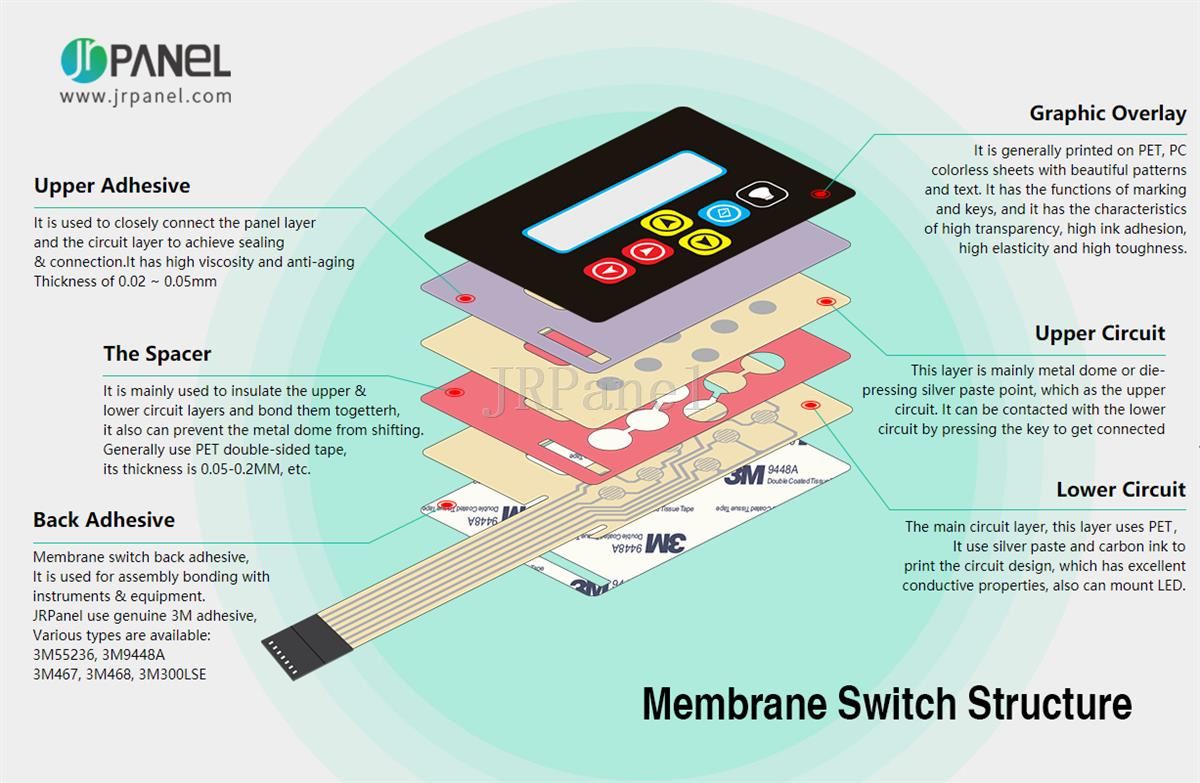Recognizing the Performance of Membrane Changes for Interface Devices
The capability of membrane switches represents a significant improvement in interface style, incorporating efficiency with visual flexibility. These buttons run with a multi-layered structure that converts customer communications into electrical signals, enabling for both compact layouts and durability versus ecological aspects. As industries increasingly prioritize individual experience, recognizing the subtleties of membrane layer button innovation becomes vital. What implications do these improvements hold for future applications, and exactly how might they redefine customer interactions across different tools?
What Are Membrane Buttons?
Membrane layer buttons are innovative interface devices that assist in customer communication with electronic equipment. These functional parts contain multiple layers, including a visuals overlay, spacer, and a published circuit layer. The style allows for a seamless integration into various digital devices, enhancing both the visual and useful elements of interface.
Membrane layer buttons are frequently used in a variety of applications, from household appliances to industrial equipment and clinical tools. Their building and construction typically includes a thin account, making them a perfect option for portable layouts. The responsive responses provided by these buttons can be engineered to satisfy particular individual choices, ensuring reliable communication between the user and the gadget.
Durability is one more substantial benefit of membrane layer buttons, as they are immune to dust, dampness, and chemicals, which enhances their life-span in requiring settings. Additionally, these buttons can be customized in terms of form, dimension, and visuals layout, enabling for branding and user-specific functions. On the whole, membrane layer switches over stand for a practical option for enhancing customer experience in electronic tools, combining functionality with aesthetic allure in an efficient way.
Just How Membrane Changes Job
Operating on a simple concept, membrane switches over make use of a split construction to register user input successfully. Each button includes several layers, including a printed circuit layer, a spacer layer, and a top visuals layer, which are made to function with each other seamlessly. When a customer presses the top layer, it compresses the spacer layer, bringing the conductive aspects of the circuit layer into call with each various other.
This get in touch with creates a closed circuit, indicating the gadget to implement a specific feature. The design permits numerous setups, including tactile comments, which can enhance the individual experience by giving a physical feeling upon activation. The products made use of in membrane layer buttons commonly consist of adaptable substrates, such as polyester or polycarbonate, which make certain toughness and resilience against deterioration.

Secret Advantages of Membrane Layer Switches

An additional significant benefit is their density. Membrane layer switches are thin and light-weight, which enables producers to conserve area in their tools without sacrificing functionality. This function is specifically valuable in applications where weight and quantity are crucial factors to consider.
Furthermore, membrane switches are immune to dirt, wetness, and chemicals, improving their toughness. This durability expands their lifespan and lowers the requirement for constant substitutes, resulting in expense financial savings in time.
Furthermore, the responsive feedback provided by membrane layer switches can be enhanced to enhance user communication. They can include features such as elevated buttons or distinct clicks, enhancing use and user experience.
Applications Across Industries
Interface gadgets utilizing membrane layer switches prevail in a vast array of markets, showcasing their flexibility and capability. Membrane Switch. In the clinical industry, membrane buttons are important to tools such as diagnostic devices and patient monitoring systems, where their longevity and ease of cleansing are vital for preserving hygiene requirements. In a similar way, in the anchor auto market, these buttons are utilized in dashboard controls and infomercial systems, offering a smooth and modern interface for individuals.
Furthermore, the customer electronics market benefits from membrane switches in devices and portable tools, where compact style and easy to use user interfaces enhance customer experience. Industrial applications likewise take advantage of membrane layer switches for control board in equipment and automation systems, emphasizing their effectiveness and resistance to rough settings.
In the aerospace and defense sectors, membrane buttons are utilized in cockpit controls and tools, where dependability and performance under severe problems are extremely important. In addition, the video gaming sector increasingly integrates membrane layer switches in controllers and game makers, adding to an engaging user experience. Generally, the flexibility of membrane layer changes enables their extensive usage throughout numerous sectors, underscoring their relevance in modern-day interface style.
Future Patterns in Membrane Change Innovation

In addition, using advanced materials, such as polycarbonate and polyester films, is expected to rise, providing enhanced resilience and resistance to environmental stress factors. These materials add to the total long life of membrane layer buttons, making them ideal for harsher commercial applications.
In addition, the consolidation of wise innovation, including IoT connection, will certainly make it possible for membrane switches to connect with other tools and systems, facilitating an extra interactive user experience. This pattern lines up with the expanding need for smart tools throughout numerous markets, from health care to consumer electronics.
Finally, personalization choices are expected to expand, enabling makers to develop bespoke services customized to specific individual demands and choices. These advancements will certainly position membrane layer buttons as essential elements in the evolution of interface technology.
Conclusion
In final thought, membrane layer index changes represent a critical advancement in customer interface technology, offering a trustworthy and functional solution for diverse digital applications. As advancements in material science and touch noticing innovations continue, the capability and applicability of membrane switches are anticipated to expand, enhancing their value in contemporary electronic devices.
Comments on “The Function of a Membrane Switch in Modern Touch Interfaces and Controls”